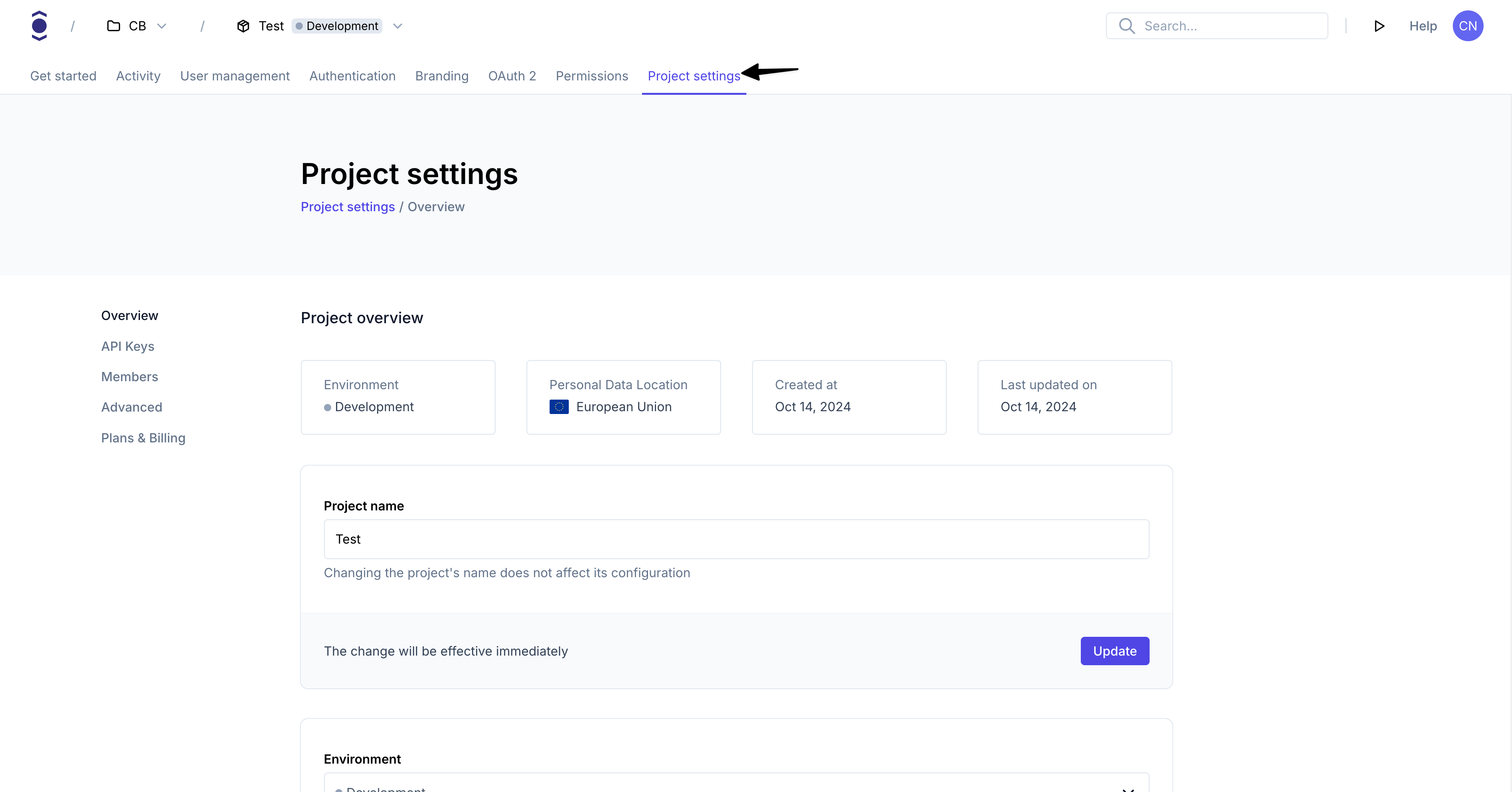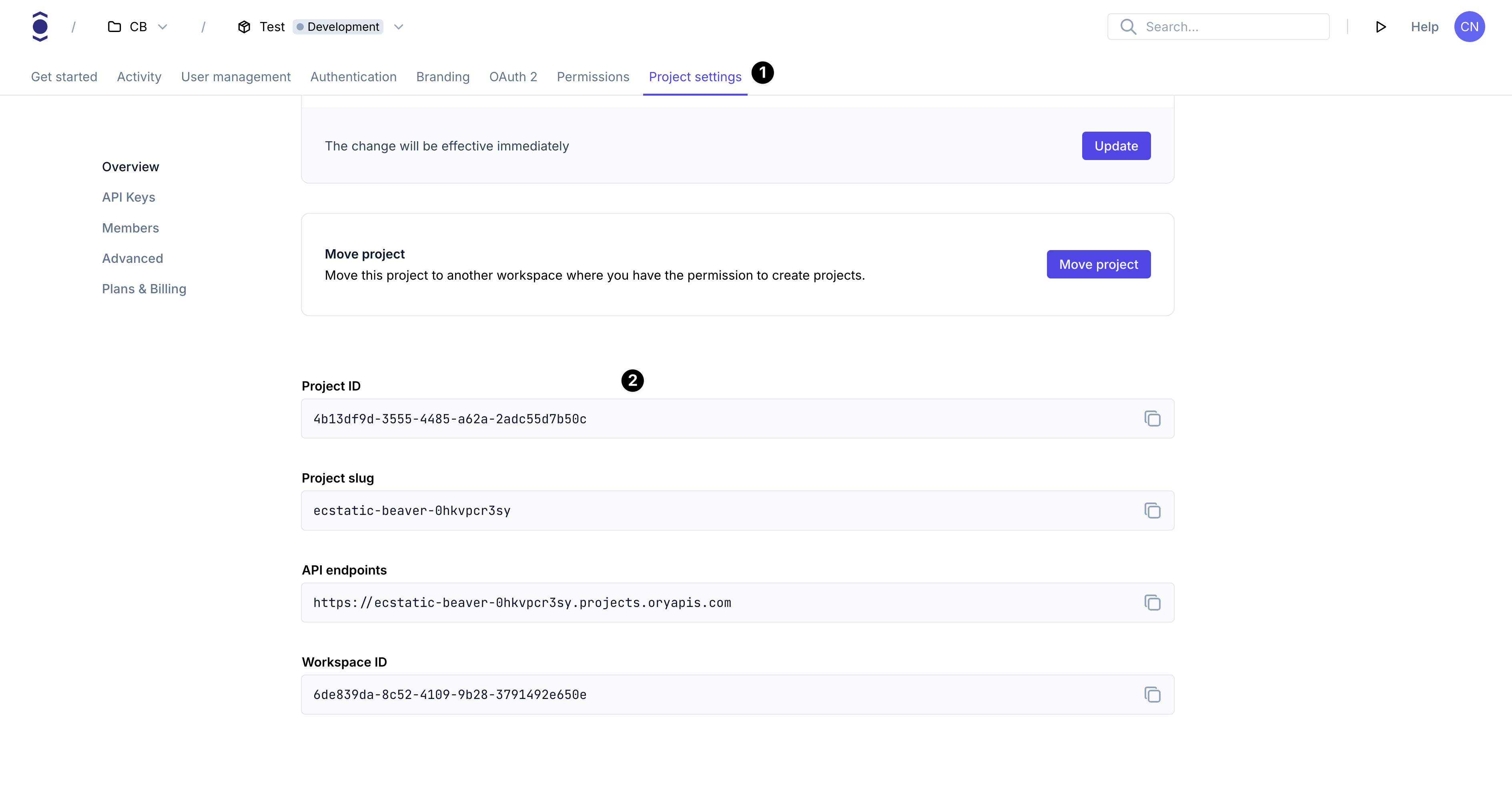Integrate authentication into Node.js / Express.js
This guide shows how to create a simple Express.js application and secure it with authentication powered by Ory. The guide provides the setup for using Ory Network, but the code can be used with both Ory Network and self-hosted Ory software.
This guide is perfect for you if:
- You have Express.js installed.
- You want to build an app using Express.js.
- You want to give access to your application to signed-in users only.
Before you start, watch this video to see the user flow you're going to implement:
You can find the code of the sample application here.
Create Express.js app
Create a new Express.js project:
mkdir your-project
cd your-project
npm init -y
npm install express
npm install -D nodemon
Install Ory SDK
To interact with Ory's APIs, install the Ory SDK:
npm i --save @ory/client-fetch @ory/cli
Create a new Ory project
- Create an Ory account at https://console.ory.sh
- Create a new project at https://console.ory.sh/projects/create
- Go to your project settings

- Note down your project credentials (ID, slug, endpoint)

Install Ory CLI
Follow this guide to install the Ory CLI on your machine.
Why do I need the Ory CLI
The Ory security model uses HTTP cookies to manage sessions, tokens, and cookies. Because of browser security measures like
CORS, Ory APIs must be exposed on the same domain as your application.
In the case of this example the application runs on your local machine. The cookie domain is localhost.
Use either localhost or 127.0.0.1 consistently. Although technically they refer to the same machine, browsers treat them as
different cookie domains.
Ory CLI provides a convenient way to configure and manage projects. Additionally, the CLI provides Ory Tunnel - a tool that ensures cookies match the domain your application is currently on.
To make Ory APIs and your application available on the same domain, Ory Tunnel mirrors Ory endpoints and rewrites cookies to match
the correct domain. As a result, the domain of the cookies is set correctly to the domain you run the app on instead of
<your-project-slug>.projects.oryapis.com.
By using the Tunnel, you can easily connect the application you're developing locally to Ory Network and consume the APIs without additional configuration or self-hosting any Ory services.
To learn more about the Ory Tunnel, read the dedicated section of the Ory CLI documentation.
Update the npm scripts
Now that the Ory CLI is installed, create a new npm script to run the tunnel server:
{
"name": "protect-page-login",
"version": "0.0.0",
"private": true,
"scripts": {
"dev": "nodemon index.js",
"tunnel": "ory tunnel --project $ORY_PROJECT_ID --port 4000 --dev http://localhost:3000"
},
"dependencies": {
This requires the express app (npm run start) to run on port 3000. However, the app has to be accessed through the port 4000
(http://localhost:4000).
Validate and login
Next we add a session check to the default home page of the example application. The highlighted code is what we added to check whether the user is signed in, and redirect them to the login page if not:
const app = require("express")()
const sdk = require("@ory/client-fetch")
const basePath = process.env.ORY_SDK_URL || "http://localhost:4000"
const ory = new sdk.FrontendApi(
new sdk.Configuration({
basePath,
}),
)
const requireAuth = async (req, res, next) => {
try {
const session = await ory.toSession({ cookie: req.header("cookie") })
req.session = session
next()
} catch (error) {
res.redirect(basePath + "/ui/login")
}
}
app.get("/", requireAuth, (req, res) => {
res.json(req.session)
})
const port = process.env.PORT || 3000
app.listen(port, () => console.log(`Server is running on port ${port}`))
Test your application
Great, that's it. Let's run your application. Start the Express.js server
npm run dev
Next open a new terminal window and start the Ory Tunnel. Upon first start, the Ory Tunnel will ask you to log into your Ory Console account.
ORY_PROJECT_ID=<YOUR_PROJECT_ID> npm run tunnel
Replace <YOUR_PROJECT_ID> with your actual Ory Project ID from the Ory Console.
To access the Express.js app through the Ory Tunnel open http://localhost:4000 in your browser. You are presented with Ory's Sign In page. Let's click on sign up and create your first user.
Go to production
You can use many different approaches to go to production with your application. You can deploy it on Kubernetes, AWS, a VM, a
RaspberryPi - the choice is yours! To connect the application to your Ory project, the app and Ory APIs must be available under
the same common domain, for example https://ory.example.com and https://www.example.com.
You can easily connect Ory to your subdomain. To do that, add a Custom Domain to your Ory Network project.
With the custom domain set up, you don't need to use Ory Tunnel to interact with Ory APIs. Instead, use the configured custom domain in your SDK calls.
// 1. Import SDK
import { FrontendApi } from "@ory/client-fetch"
// 2. Configure Ory
const basePath = process.env.ORY_URL
const ory = new FrontendApi(
new Configuration({
basePath,
credentials: "include",
}),
)
// 3. Sign in or grab session.
const data = await ory.toSession()